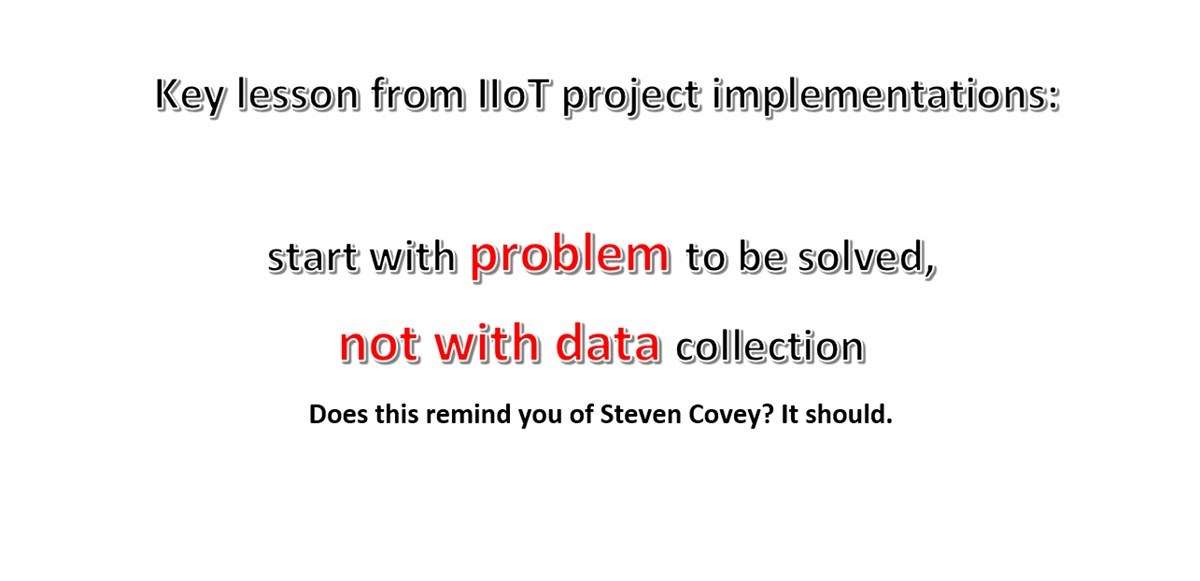Sam Hoff, president of Patti Engineering. suggests to start collecting data only after one has identified the problem. See IIoT project success: First identify the problem, then begin collecting data.
I think he meant to say “problem area”, because if you know what the problem is – you do not need more data, you need more action. In other words, you’ve got to know what you’re solving before you buy meters and sensors, or else you will have more head ache, then value. This approach stays true whether you deal with quality, throughput, equipment utilization or energy cost.
Without knowing problem to be solved, installing meters is like shooting blindfolded.
3 lessons on setting up a successful IIoT project
Here are my take away points with some additions and comments:
- WHY: Determine problem area before you start collecting data. What do you seek to change? Why it’s important for business.
- WHAT are the boundaries of problem area? What parameters drive the problem?
- HOW can you measure these parameters with the lowest cost and the highest relevance? How often do you need to measure to solve your problem? What data can be extracted from existing equipment? How can you validate data collected from different sources?
5 common mistakes in IIoT (submetering) projects
- Start with installation of meters
- Expect clean data from existing sensors: is data collection was not designed to solve target problem, then extracting what you need from what you get (cleansing) will likely take a significant effort.
- Rely on data coming from added sensors. Non-essential sensors are routinely bypassed by maintenance personnel as a low priority asset.
- Expect that presence of data will identify problem – analysis is the key to solution
- Expect that identify = solve: having right data is a ‘foundation’, analysis is ‘walls and roof’, but you have to move to enjoy the house.
Related posts:
More energy data may not benefit business – and what does
Submetering, EMIS and Energy Management System: what is the difference?







Leave A Comment